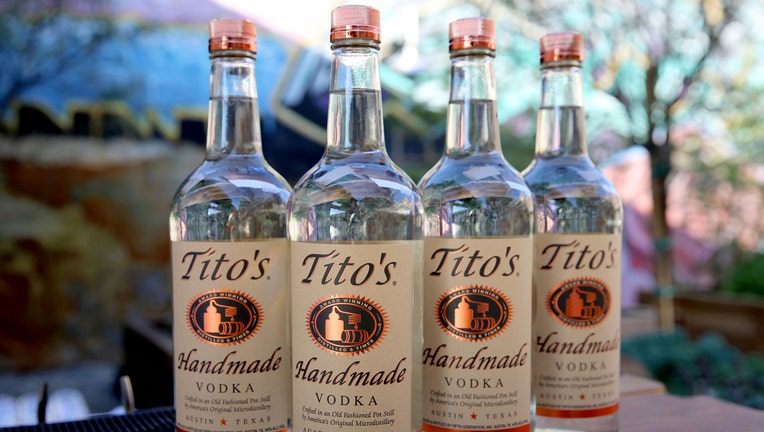Tito's Handmade Vodka does not want you to use it to make homemade hand sanitizer

AUSTIN, Texas - Tito's Handmade Vodka, which is produced in Austin at Texas’ oldest legal distillery, is letting their customers know that they shouldn't be using their vodka for homemade hand sanitizers. Tito's Handmade Vodka is 40% alcohol and therefore does not meet the current recommendation of the CDC.
Fear of the novel coronavirus has led people to stock up on germ-killing gel, leaving store shelves empty and online retailers with sky-high prices set by those trying to profit on the rush. More is said to be on the way, although it's not clear how long it will take retailers to restock.
While these products are becoming more and more scarce in the face of the growing COVID-19 outbreak, the World Health Organization has an available recipe guide for how to make alcohol-based hand rub formulas recommended by the organization. Some fans of Tito's Handmade Vodka began tweeting at the Austin-based company that they were using their vodka for their recipes.
As a result, Tito’s Vodka released a statement telling people not to pour it on their hands and keep it in their glasses.
---------
Get breaking news alerts in the FOX 7 Austin News app. It is FREE!
---------
RELATED: Coronavirus: Symptoms, testing and how to prepare amid growing COVID-19 outbreak
Here is everything you need to create your own hand sanitizer, according to WHO:
- Ethanol 96% or isopropyl alcohol 99.8%: 8333 ml or 2.2 gallons of ethanol or 7515 ml or 2 gallons of isopropyl alcohol
- Hydrogen peroxide 3%, which is used to inactivate contaminating bacterial spores in the solution and is not an active substance for hand antisepsis: 417 ml or 1.76 cups
- Glycerol 98%, which acts as a moisturizer: 145 ml or 0.6 cups
- Sterile distilled or boiled cold water
The actual materials you’ll need to mix the ingredients include:
- Depending on how much you want to make, you’ll need anywhere from a 10-liter (2.6 gallon) glass or plastic bottle to 50-liter (13.2 gallon) plastic tank.
- Wooden, plastic or metal paddles for mixing
- Measuring cylinders and measuring jugs
- Plastic or metal funnel
- An alcoholometer

St. David’s HealthCare discusses coronavirus preparedness efforts, new verbal respiratory screening
St. David’s HealthCare’s Chief Medical Officer Dr. Ken Mitchell is talking about the hospital's coronavirus preparedness efforts.
The recipe provided by the organization can be prepared in 10-liter glass or plastic bottles with screw-threaded stoppers to prevent spillage.
RELATED: Coronavirus more contagious than SARS or MERS, can live on surfaces for up to 9 days, studies say
Here is the step by step preparation, according to WHO:
- The alcohol for the formula to be used is poured into the large bottle or tank up to the graduated mark.
- Hydrogen peroxide is added using the measuring cylinder.
- Glycerol is added using a measuring cylinder. As glycerol is very viscous and sticks to the wall of the measuring cylinder, it should be rinsed with some sterile distilled or cold boiled water and then emptied into the bottle/tank.
- The bottle/tank is then topped up to the 10-liter mark with sterile distilled or cold boiled water.
- The lid or the screw cap is placed on the tank/bottle as soon as possible after preparation, in order to prevent evaporation.
- The solution is mixed by shaking gently where appropriate or by using a paddle.
Place the solution in quarantine for 72 hours before use. This allows time for any spores present in the alcohol or the new/re-used bottles to be destroyed.

